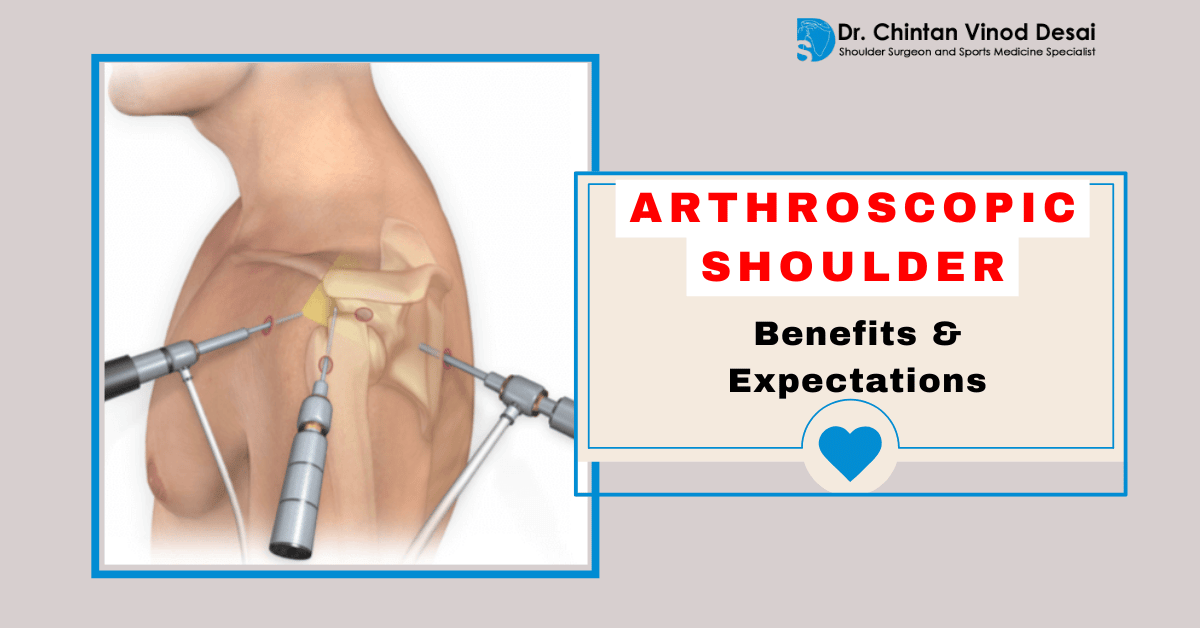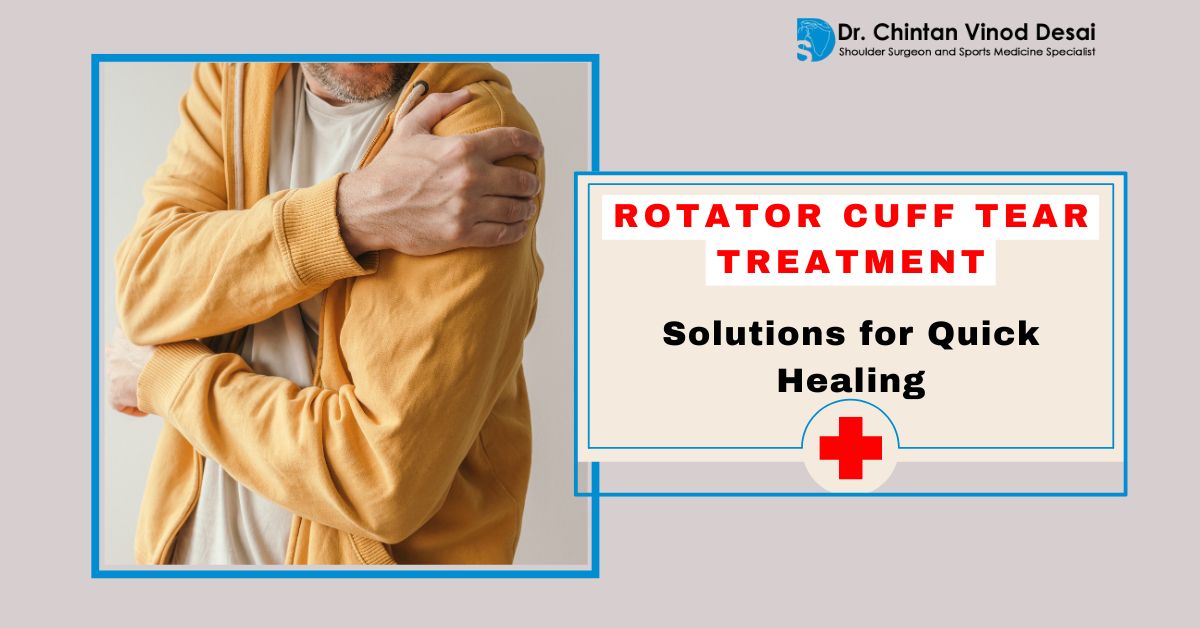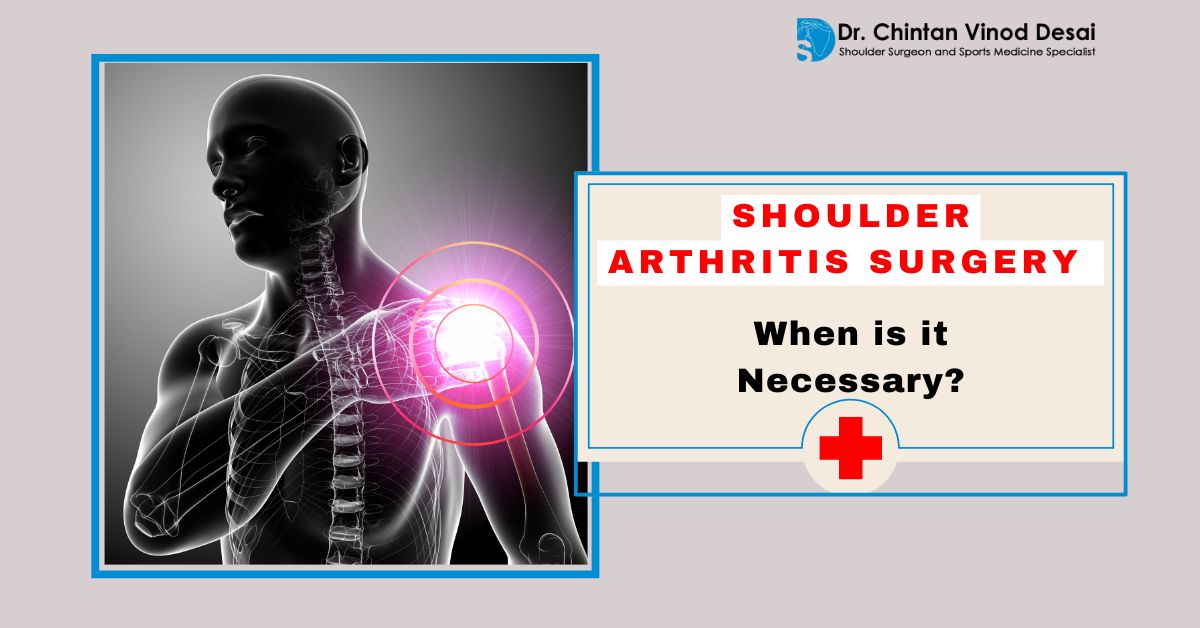Arthroscopic Shoulder Surgery
Shoulder pain can affect your daily life in ways you may not expect. From lifting groceries to reaching overhead, even the smallest movements can feel difficult. For many patients, non-surgical treatments like rest, medication, or physiotherapy may not provide lasting relief. In such cases, doctors may suggest arthroscopic shoulder surgery.
This procedure is minimally invasive, offers faster recovery, and helps restore mobility. In this blog, you will learn what arthroscopic shoulder surgery is, its benefits, the conditions it treats, what you can expect before and after surgery, and whether it might be the right choice for you.
What is Arthroscopic Shoulder Surgery?
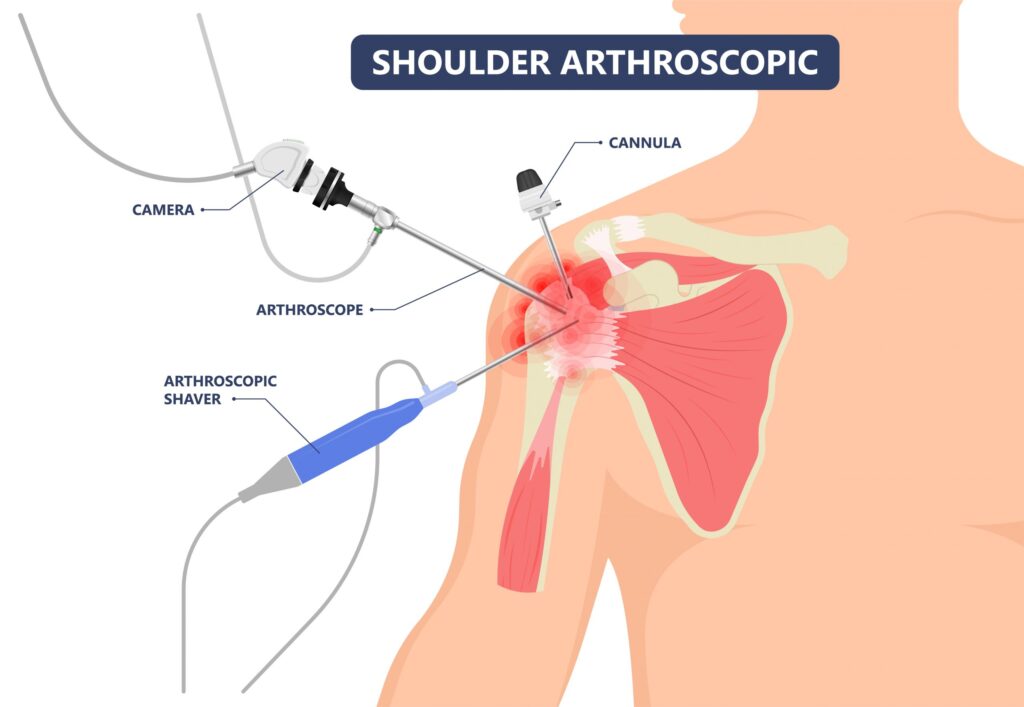
Arthroscopic shoulder surgery is a modern technique where the surgeon uses a tiny camera called an arthroscope to look inside the shoulder joint. Through small incisions, specialized instruments are inserted to repair or remove damaged tissue.
This approach allows the doctor to treat complex shoulder conditions without large cuts. It reduces scarring, lowers infection risks, and speeds up recovery compared to traditional open surgery.
Conditions Treated with Arthroscopic Surgery
Arthroscopic shoulder surgery is not for everyone. It is usually recommended when conservative treatments like physiotherapy, anti-inflammatory medications, or injections no longer help. Common conditions that may need arthroscopy include:
- Rotator cuff tears – Repairing torn tendons in the shoulder.
- Shoulder instability – Fixing repeated dislocations or looseness.
- Frozen shoulder – Removing scar tissue to restore motion.
- Impingement syndrome – Relieving pain caused by pinched tendons.
- Cartilage damage – Smoothing or repairing worn-out cartilage.
- Calcific tendonitis – Removing calcium deposits that cause pain.
If you struggle with one of these problems and daily activities feel difficult, arthroscopy may provide a solution.
Benefits of Arthroscopic Shoulder Surgery
One of the main reasons patients prefer this procedure is the quicker recovery. But the benefits go beyond that.
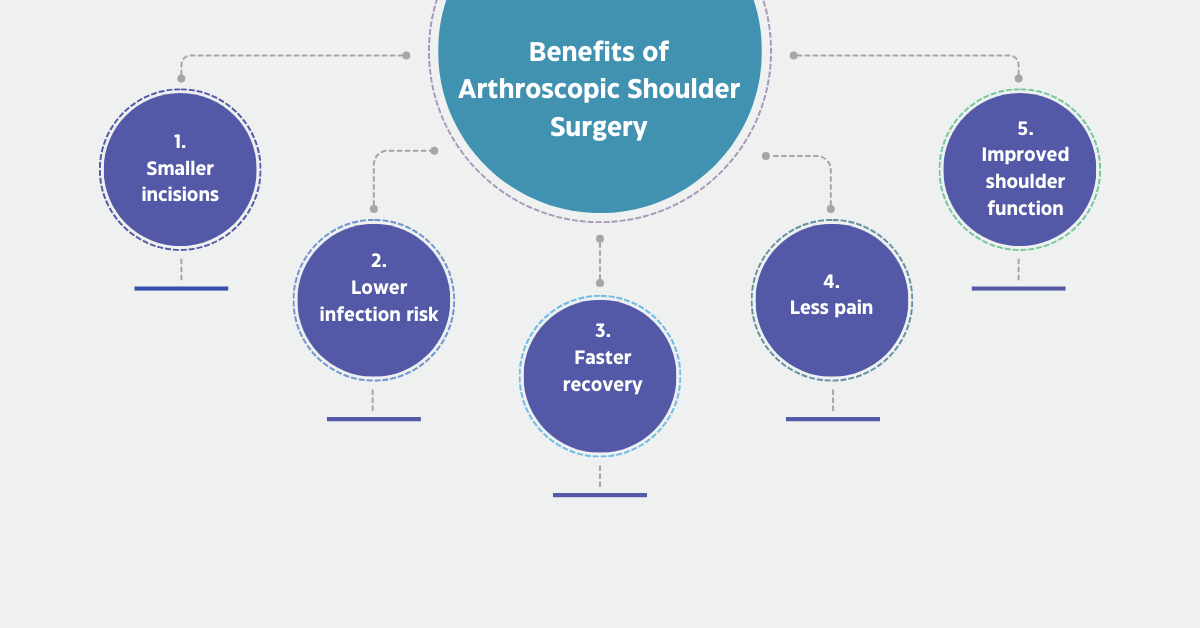
- Smaller incisions – Less visible scars and reduced tissue damage.
- Lower infection risk – Small wounds heal faster and cleaner.
- Faster recovery – Many patients return to normal activities sooner.
- Less pain – Reduced trauma to surrounding muscles and tissues.
- Improved shoulder function – Better mobility and strength after healing.
For patients who want to return to work or sports, these benefits make arthroscopy a practical option.
What to Expect Before Surgery
Before surgery, your doctor will review your medical history, order scans like MRI or X-rays, and discuss your symptoms. You may also need blood tests or heart evaluations to ensure you are fit for anesthesia.
Doctors often advise stopping certain medications, avoiding food or drink a few hours before surgery, and arranging for someone to drive you home. Preparing ahead helps reduce stress and ensures a smooth process.
What Happens During Surgery
The surgery is usually performed under regional or general anesthesia. Once you are comfortable, the surgeon makes small cuts around the shoulder and inserts the arthroscope. The live camera feed helps the doctor see inside your joint and guide surgical tools.
Depending on your condition, the surgeon may repair tendons, remove inflamed tissue, or shave bone spurs. The entire procedure usually takes one to two hours.
Recovery and Rehabilitation
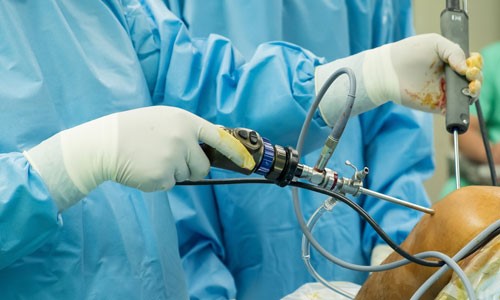
Recovery begins the moment surgery ends. Most patients go home the same day. You may need to wear a sling for a few weeks to support the shoulder. Pain medication and ice packs help manage discomfort in the early days.
Physiotherapy plays the most important role in recovery. Gentle exercises begin soon after surgery to prevent stiffness. Over time, your therapist will guide you through strengthening and stretching routines. Most patients return to light work within a few weeks and to sports or heavy lifting in a few months.
Recovery timelines vary based on the complexity of surgery and the patient’s overall health. Consistency with physiotherapy is key to regaining full function.
Is Arthroscopic Shoulder Surgery Right for You?
Surgery is not the first option for shoulder pain. It is usually recommended when all other treatments fail. You may be a good candidate if:
- You have a shoulder injury that limits daily activities.
- Non-surgical treatments have not improved your condition.
- Imaging tests confirm a repairable shoulder problem.
- You are committed to post-surgery physiotherapy.
Your surgeon will evaluate your condition, lifestyle, and expectations before recommending surgery. Always have an open discussion about risks, recovery time, and outcomes.
Doctor Introduction
Dr. Chintan Vinod Desai is a consulting Shoulder Surgeon practicing in Tardeo, Parel, Dadar, Mumbai Central, Lalbaug, Santacruz, and Mulund, Mumbai. He is experienced in performing the latest and most advanced techniques in shoulder surgery. His expertise covers a wide range of shoulder conditions, including instability, frozen shoulder, impingement, rotator cuff tears, shoulder arthritis, and calcific tendonitis. Patients trust his skill and dedication to restoring mobility and improving quality of life.
FAQs
1. Is arthroscopic shoulder surgery painful?
You may feel mild discomfort after surgery, but pain is usually well-controlled with medication. Physiotherapy helps reduce stiffness and speed recovery.
2. How long does recovery take?
Most patients recover within three to six months, depending on the type of repair and adherence to physiotherapy.
3. Can I drive after surgery?
You should avoid driving until your doctor confirms it is safe, usually after two to three weeks when you regain arm control.
4. Will I regain full shoulder strength?
With proper rehabilitation, many patients regain normal function and strength. Results vary depending on the severity of the injury.
5. Are there risks with arthroscopic surgery?
As with any surgery, risks include infection, stiffness, or incomplete relief. These are rare when performed by an experienced surgeon.
Conclusion
Arthroscopic shoulder surgery offers patients a chance to regain mobility and reduce pain with minimal downtime. It is a safe and effective option for conditions that do not improve with non-surgical care. With smaller cuts, faster healing, and better outcomes, it has become a preferred treatment for many shoulder problems.
If you are struggling with persistent shoulder pain, consult a specialist like Dr. Chintan Vinod Desai. His experience in advanced shoulder surgery ensures that patients receive expert care tailored to their needs. Taking the first step toward treatment may help you return to a more active and pain-free life.

